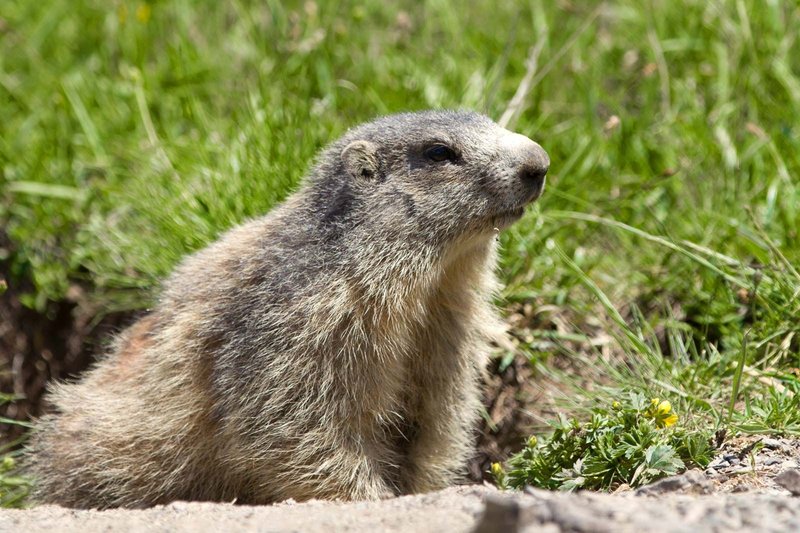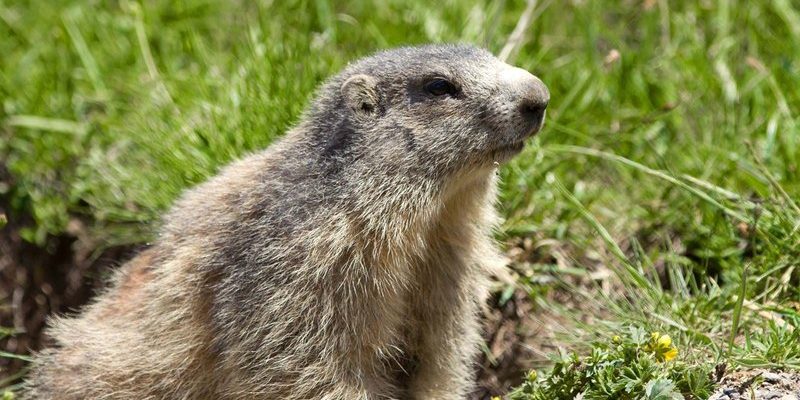
Groundhogs, also known as woodchucks, have charmed us with their antics for years, but they’re part of a bigger picture regarding wildlife conservation. So, is the groundhog endangered? Let’s dive into the world of this adorable rodent, explore its conservation status, and understand the factors that play into its survival.
Understanding the Groundhog and Its Habitat
Groundhogs are remarkable little animals that belong to the squirrel family. They’re primarily found throughout North America and are particularly common in areas with plenty of open fields and woods. Think of them as nature’s little gardeners, helping to aerate the soil and spread seeds as they dig their extensive burrow systems.
These burrows can be quite elaborate, sometimes extending 30 feet underground! They provide shelter, nesting areas, and a safe place to escape predators. Groundhogs are herbivores, feasting on a diet of grasses, fruits, and vegetables. Their eating habits can occasionally make them a nuisance to gardeners, but they’re essential for maintaining healthy ecosystems.
It’s fascinating how these animals blend into their environment and contribute to local biodiversity. You might even say they’re nature’s way of reminding us how interconnected everything is.
The Conservation Status of Groundhogs
So, are groundhogs endangered? The short answer is no. As of now, groundhogs are classified as a species of “Least Concern” by the International Union for Conservation of Nature (IUCN). This means they are not currently at risk of extinction, mainly due to their widespread distribution and adaptability to various habitats.
However, it’s crucial to keep a close eye on their population trends. In certain regions, urbanization and habitat destruction can pose challenges to their numbers. When their natural habitats are replaced by parking lots and buildings, groundhogs can struggle to find food and shelter.
On the bright side, many areas have seen stable or even growing populations, thanks to conservation efforts and habitat management practices. It’s a reminder that while they’re not endangered now, we must always be proactive about protecting their environments.
Threats to Groundhog Populations
While groundhogs aren’t currently endangered, they face various threats that could impact their populations in the future. Here’s a rundown:
- Habitat Loss: Urban expansion can shrink the open fields and wooded areas they depend on.
- Predation: Natural predators like coyotes, foxes, and birds of prey can threaten groundhog populations, especially when they’re stressed or in smaller habitats.
- Climate Change: Changes in weather patterns can impact their food sources and breeding cycles, making survival more challenging.
- Human Interaction: Encounters with humans can lead to accidental deaths or displacements as people alter their backyards to be less groundhog-friendly.
Each of these threats highlights the importance of understanding how our actions ripples through an ecosystem. As their habitats get smaller, groundhogs are forced into more conflicts with humans and other wildlife.
Conservation Efforts for Groundhogs
While groundhogs are not endangered, that doesn’t mean the work is done. Conservation efforts can ensure that these animals thrive for generations to come. Here are a few strategies that have been effective:
1. Habitat Preservation: Protecting natural areas is critical. Organizations work to conserve open spaces where groundhogs can flourish without interference.
2. Community Awareness: Educating homeowners about coexisting with groundhogs helps reduce unnecessary conflict. Simple actions, like using fences to protect gardens, can make a difference.
3. Monitoring Programs: Scientists keep track of groundhog populations and their health. By understanding their habits and movements, we can better protect them.
4. Research Initiatives: Studies of their behaviors and environments can lead to improved conservation strategies. Knowing what groundhogs need to thrive is key to keeping their populations healthy.
Each of these efforts plays a part in protecting our fluffy friends and ensuring they continue to be a part of our natural landscape.
Connecting Groundhogs to Broader Conservation Themes
Groundhogs may seem like just another cute animal, but they represent a vital part of the greater conversation around wildlife conservation. Their presence is indicative of the health of their ecosystems. When we see healthy groundhog populations, it often signals that the environment is robust and sustainable.
Caring for groundhogs encourages us to think about other wildlife as well. If we can successfully protect their habitats, we’re likely benefiting countless other species sharing the same space.
Additionally, projects aimed at conserving groundhogs can promote community involvement and foster an appreciation for local wildlife. Engaging with nature can inspire stewardship among residents, leading to broader efforts to protect various ecosystems.
Why This Matters: The Ripple Effect of Conservation
The importance of conservation extends beyond just the groundhog. Each species has a unique role, contributing to the balance of our environment. When we take steps to protect one species, we often help many others in the process. This interconnectedness is a powerful reminder that our actions—big or small—can make a significant difference.
If you’ve ever cared for a garden, you know how every plant contributes to the overall health of the garden. The same goes for nature. When groundhogs thrive, they help ensure that other animals and plants get the support they need to flourish.
In the end, conservation efforts remind us of our responsibility to protect our planet. It’s a collective task that requires awareness and action from everyone.
So, while groundhogs are not currently endangered, it’s important to recognize the challenges they face and the steps we can take to help them thrive. From supporting local conservation initiatives to simply being mindful of our interactions with nature, we all have a role to play.
By caring for the humble groundhog, we nurture the broader ecosystems they represent. It’s a win-win: protecting these lovable creatures helps ensure a healthy environment for all of us. So, the next time you spot a groundhog peeking out of its burrow, remember that it’s not just about spring predictions; it’s also about the importance of conservation and the impact we can all make together.

